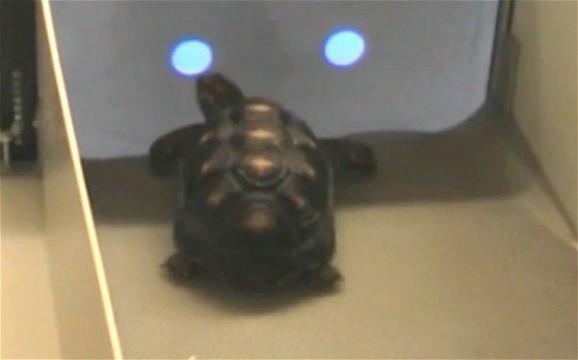Tortoises Can Use Touchscreens
This article is more than 2 years old
 You’d expect to see monkeys using touchscreens, or dolphins, or maybe even elephants, but tortoises? I guess there’s no excuse for my inability to use them, then, as this sets the bar pretty low (no offense to the turtles).
You’d expect to see monkeys using touchscreens, or dolphins, or maybe even elephants, but tortoises? I guess there’s no excuse for my inability to use them, then, as this sets the bar pretty low (no offense to the turtles).
Life sciences professor Anna Wilkinson of the UK’s University of Lincoln wanted to see if it was possible to teach animals navigational techniques that they weren’t already born with. She choose the red-footed tortoise, which originates in Central and South America, in part because of the differences between turtles and mammals that might otherwise be used in such a test.
Mammals use the hippocampus to navigate spaces, while reptiles seem to use their medial cortex. Much of Wilkinson’s research has involved observing tortoises to see how they move around within their environment via spatial and directional cues. Another reason she chose the tortoise is because the creatures have been around for a long, long time, and are largely the same as they were millions of years ago. Studying them might provide clues to the way the brain and thought processes have evolved over time.

Wilkinson trained the tortoises the same way researchers train mice and monkeys: using treats. She gave them favorite foods such as strawberries when they pecked at blue circles on a touch screen. Once the peck-and-reward system had been established, she experimented with the application of that knowledge to actual life situations (you know, because tortoises get pissy if what they’re learning doesn’t have real-world applications). She put two tortoises, Esme and Quinn, into a space with two empty blue food bowls. Instead of simply responding to the blue color and circular shape, both tortoises approached the bowl on the same side as the blue circles that had previously appeared on the screen — in other words, they remembered the blue and the circle, but also where the reward-giving blue circles had been during their training. This proves that instead of rote memorization, they remembered the position of objects within their environment.
The findings were published in Behavioural Processes and argue for the transference of knowledge from the screen to the physical world (perhaps the same can’t quite be said for humans?), which opens up myriad possibilities for the training of animals using screens. Interestingly, when she repeated the experiment in reverse — trying to transfer information learned in the physical space back to the touchscreen — it didn’t work. The tortoises stuck with what they learned from the screen the first time. Now they’re starting to sound more like humans. Next up: Candy Crush.












